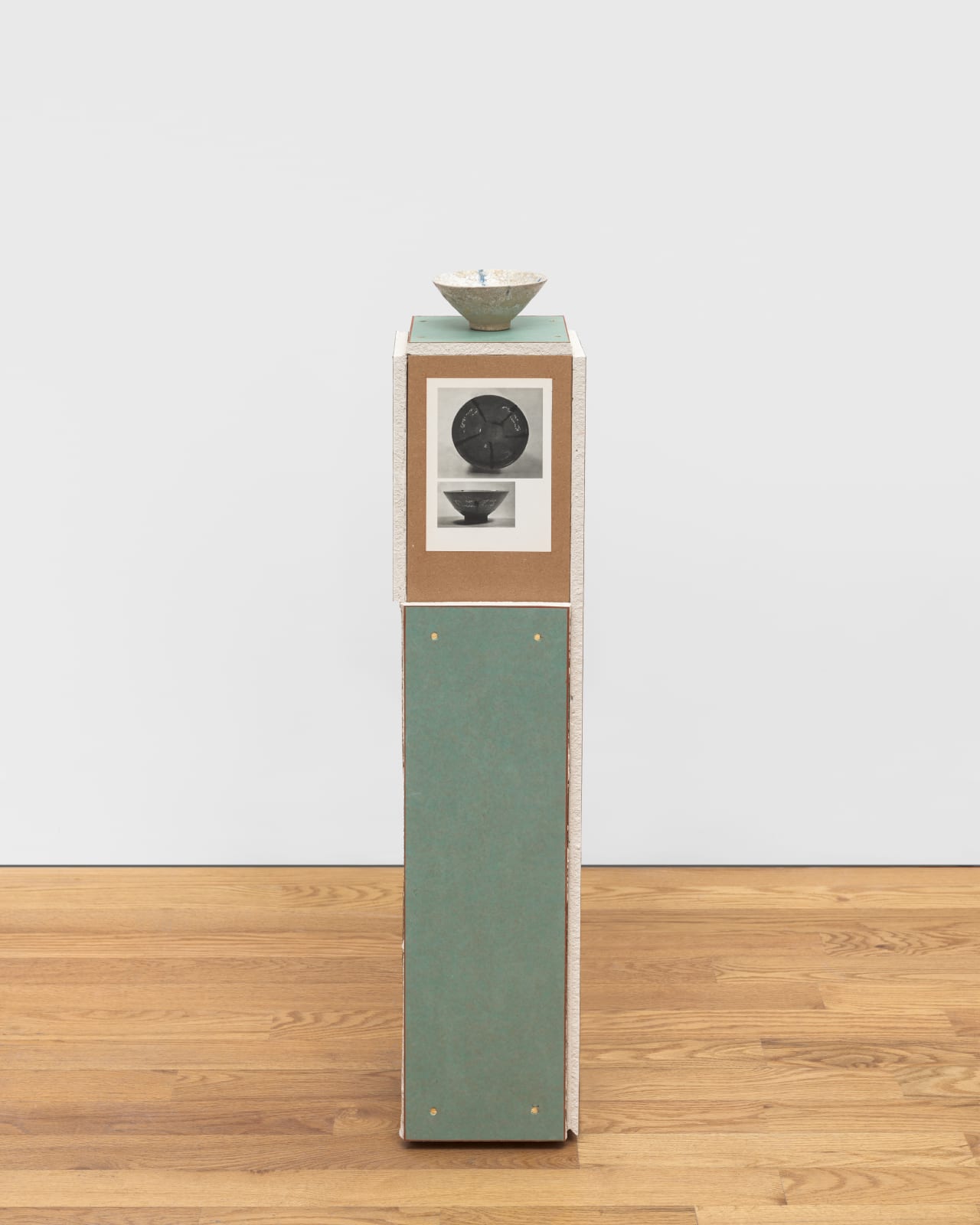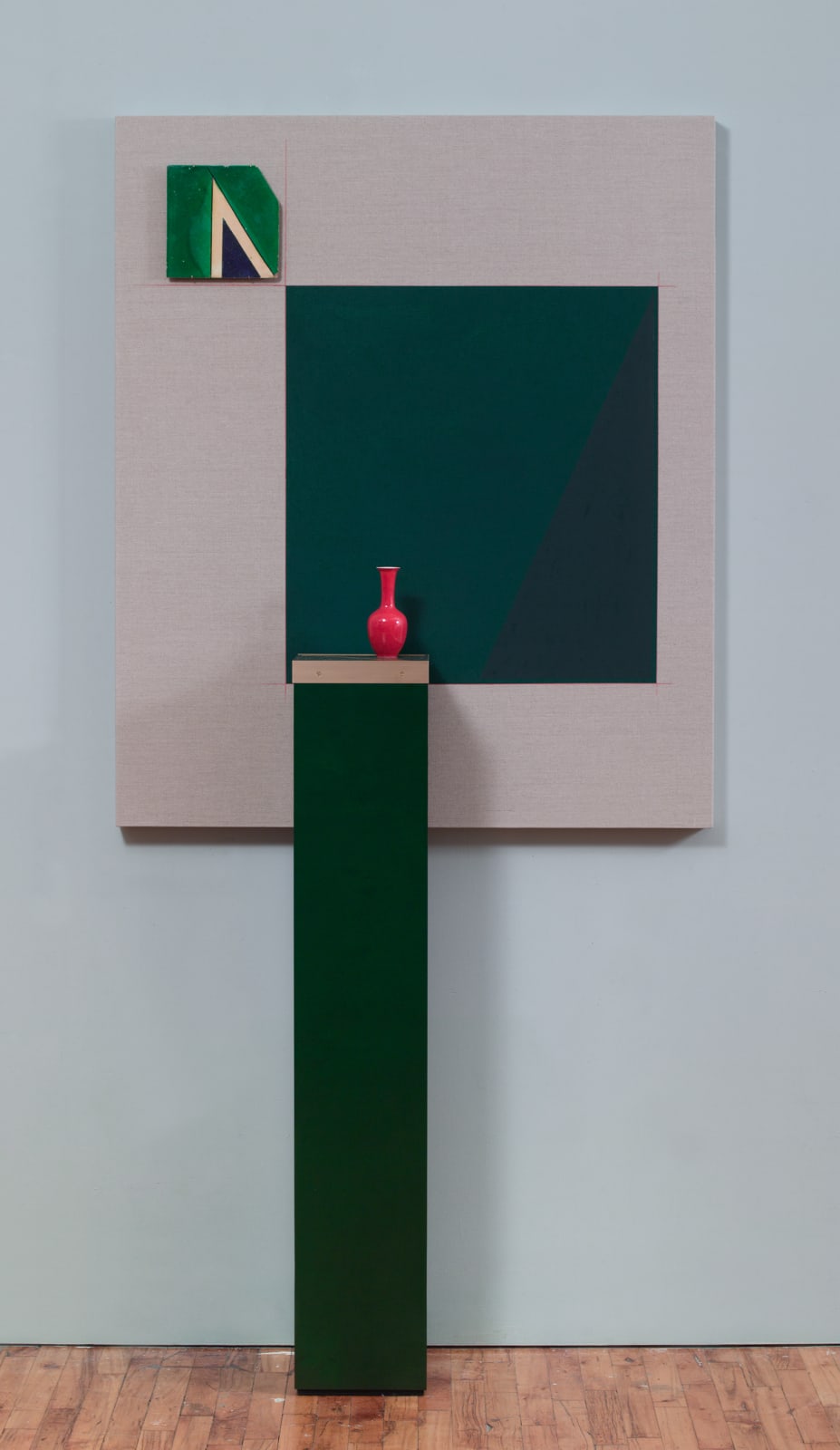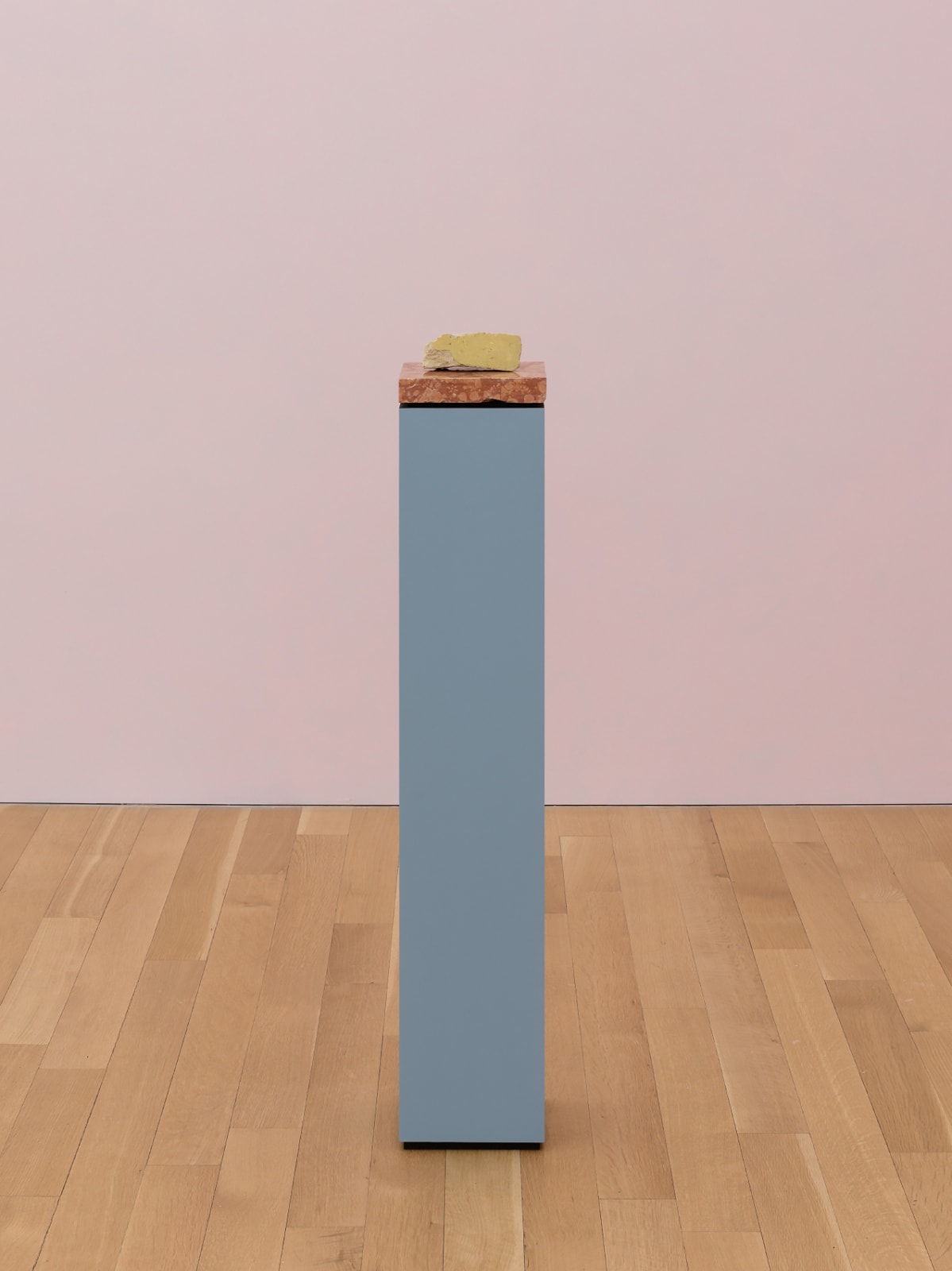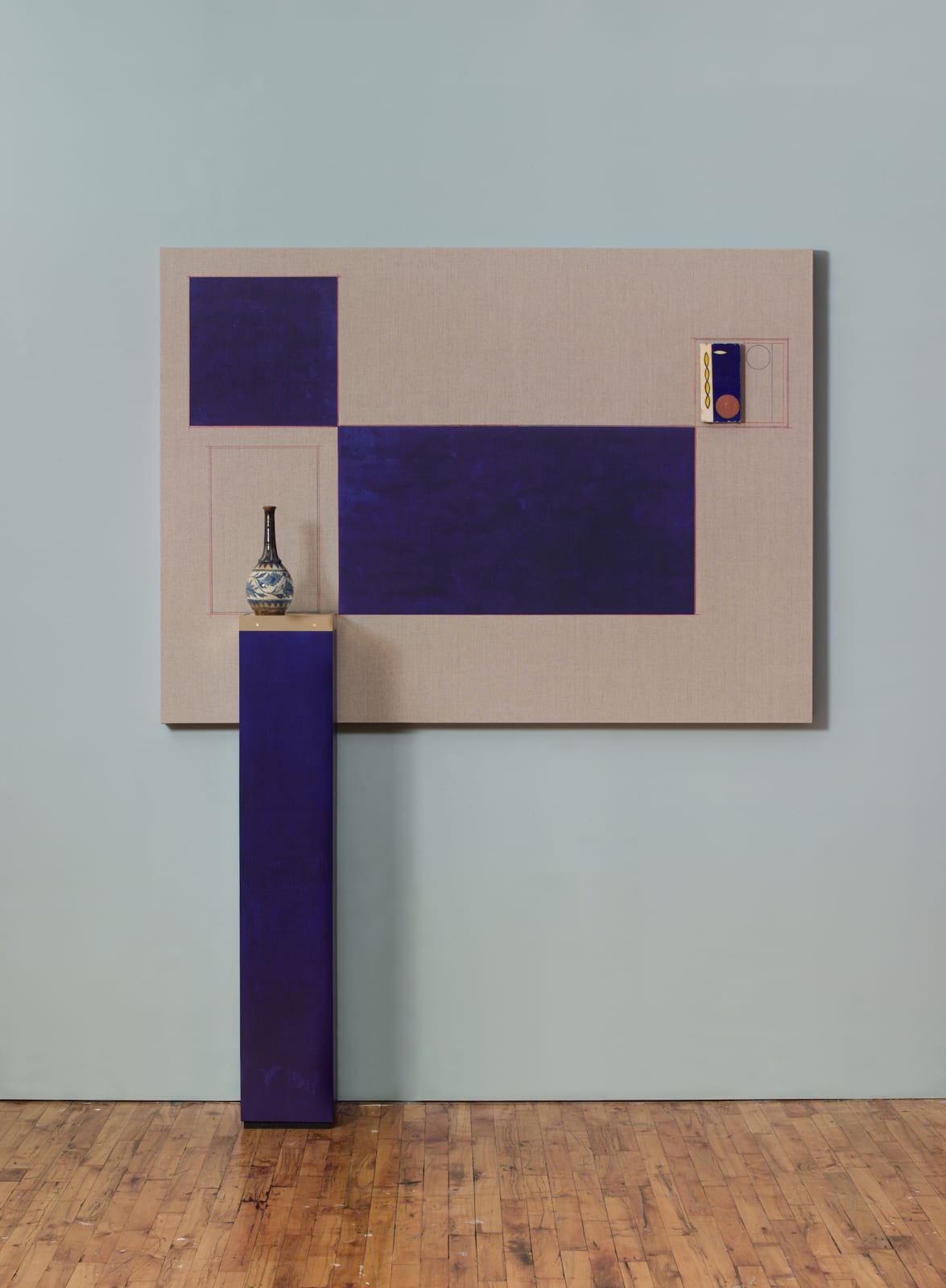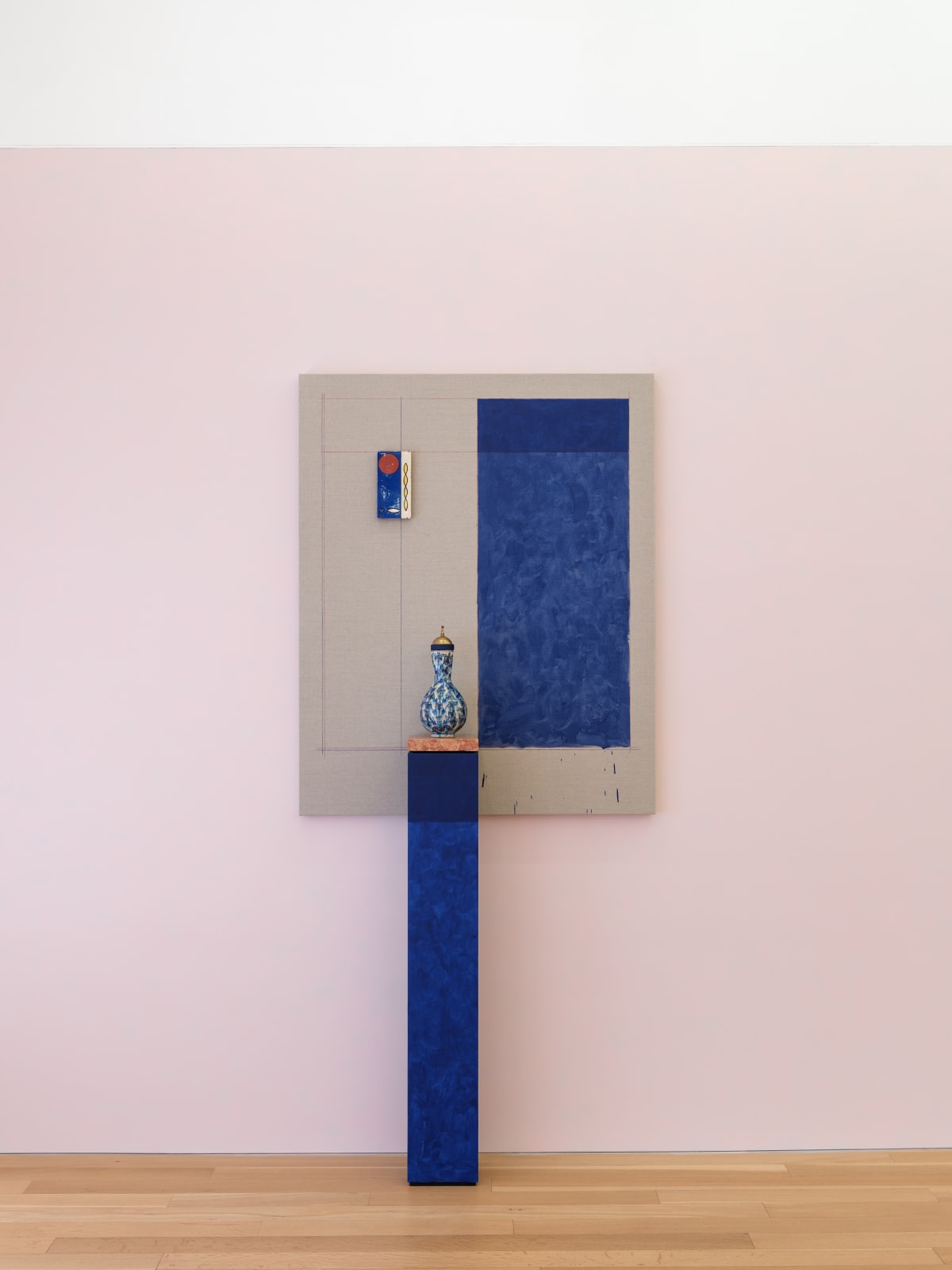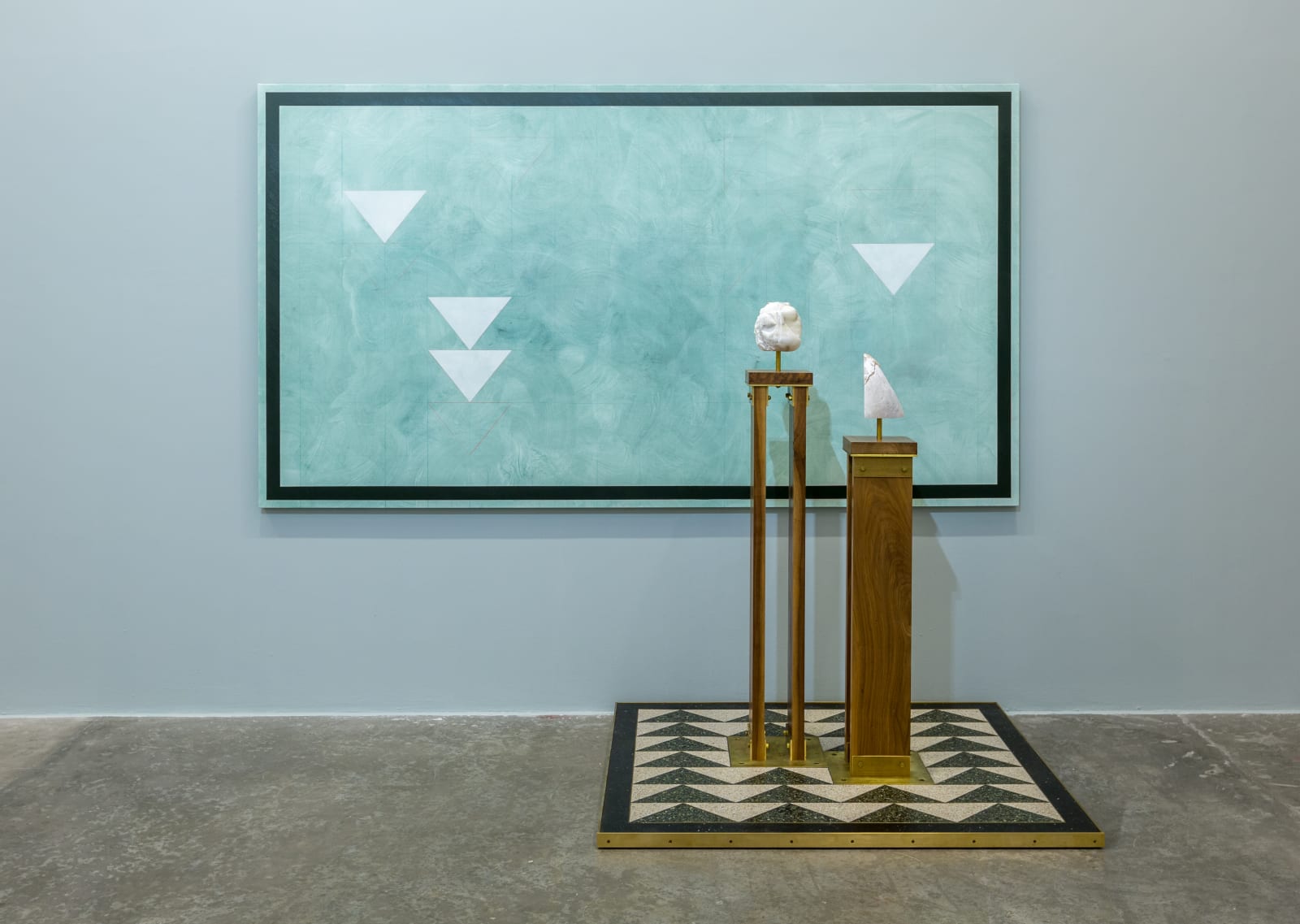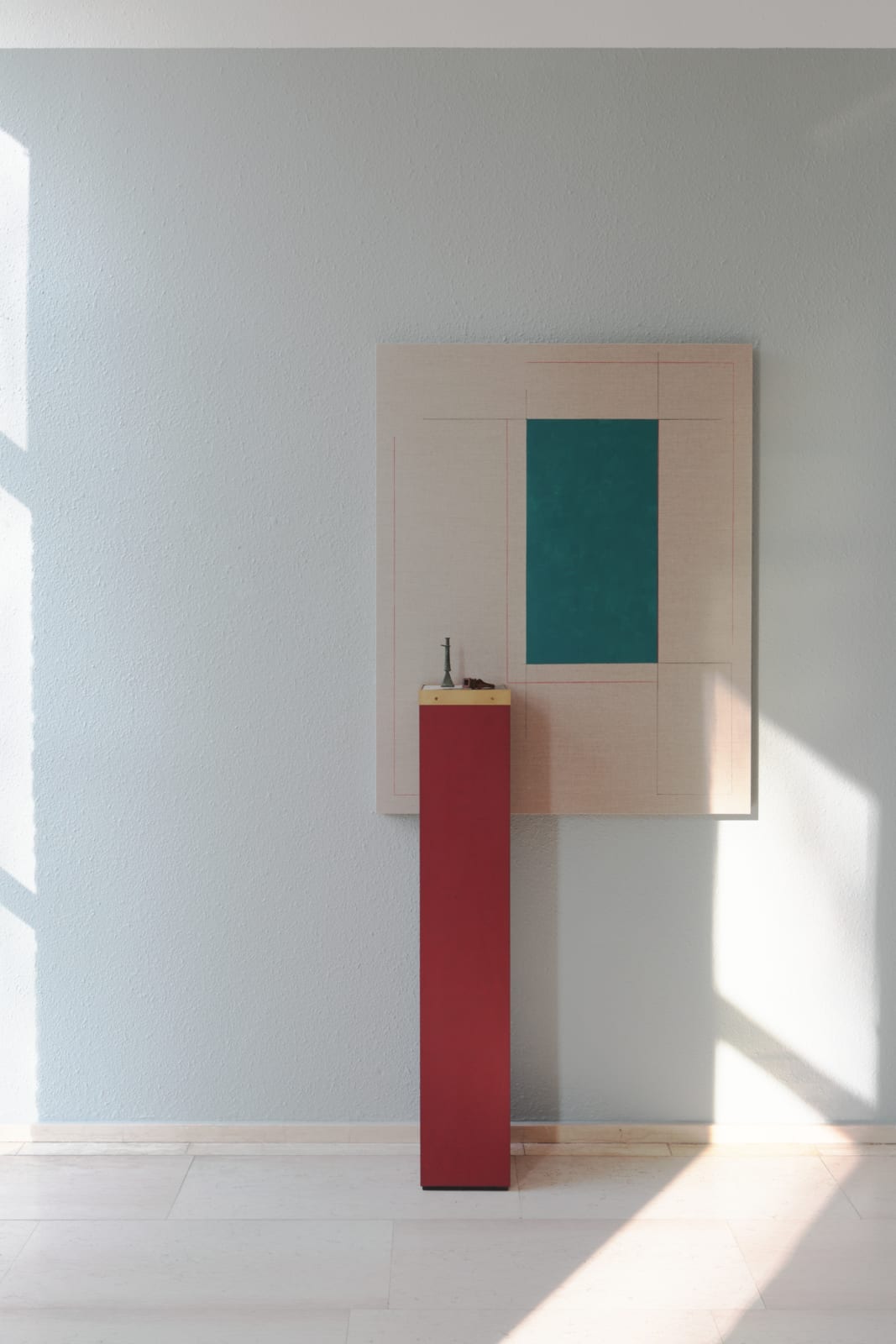Aram’s sculptures extend his painterly investigations into three dimensions, creating objects that hover between artwork and display. Painted pedestals function simultaneously as sculptures and supports, their surfaces treated with the same attention to color and composition as his canvases. These hybrid objects refuse singular classification, embodying Aram’s critique of the categories that enforce artificial divisions between ornament and fine art. Often incorporating materials such as marble, brass, and ceramics, the sculptures draw equally on historical decorative practices and contemporary design.
These works frequently include displayed objects, producing compositions that echo museum aesthetics, while questioning their authority. In doing so, Aram highlights the extent to which cultural meaning depends on systems of presentation, exposing how context transforms objects into art. His sculptures exist in a productive tension between function and contemplation, utility and aesthetics. They ask viewers to reconsider the fragile boundaries between design and art, suggesting that these categories are less fixed than convention would have us believe.
